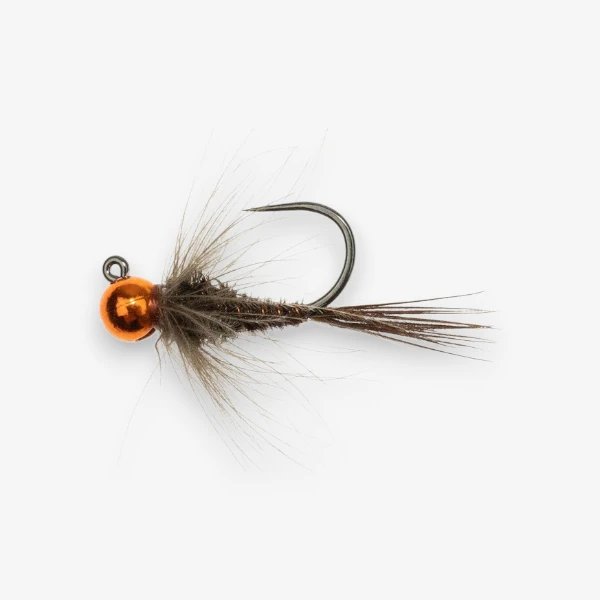Hecuba
Description
Overview:
The Hecuba, also known as Drake Mackerels or Great Red Quill (Timpanoga hecuba), is the largest species in the (Ephemerellidae) family, often rivaling the Western Green Drake (Drunella grandis) in size. Though its emergence is not as abundant or concentrated as other major mayflies, where it is locally plentiful, it can create productive fishing conditions due to its large size and striking appearance. The Hecuba is most easily identified by its robust, stout body and dramatic lateral abdominal spines. It typically hatches in mid to late summer in fast-flowing streams and rivers, with adult mayflies emerging during the late afternoon or early evening. The Hecuba’s size and distinctive features make it an important food source for larger trout, which key in on its large profile. Common hook sizes for Hecuba imitations range from 6 to 10.
Nymph:
The Hecuba nymph is large, measuring around 1.25 to 1.5 inches in length. It has a stout, dark brown to olive body with pronounced lateral abdominal spines, which give it a rugged and distinctive appearance. These nymphs inhabit fast-flowing streams, clinging to rocks and submerged vegetation. They crawl along the substrate before emerging as adults. Common hook sizes for Hecuba nymph patterns range from 8 to 12, reflecting the size and robustness of the nymph.
Dry/Dun/Spinner:
The adult Hecuba, or dun, measures around 1.25 to 1.5 inches in length. It features a dark brown to reddish-brown body with large, translucent wings that often have a golden tint. The most notable characteristic of the Hecuba dun is its stout body and dramatic lateral abdominal spines, which make it stand out among other mayflies. The Hecuba typically emerges during the late afternoon or early evening, often in smaller hatches compared to other mayfly species, but still drawing attention from larger trout. Hook sizes for dry flies range from 6 to 10. Effective patterns often include larger mayfly imitations such as traditional dries, parachute styles, or comparaduns that replicate the Hecuba’s size and movement on the surface.
Hatch Chart
Subscribe to view hatch locations. Hatch data is available for all species.


.jpg)